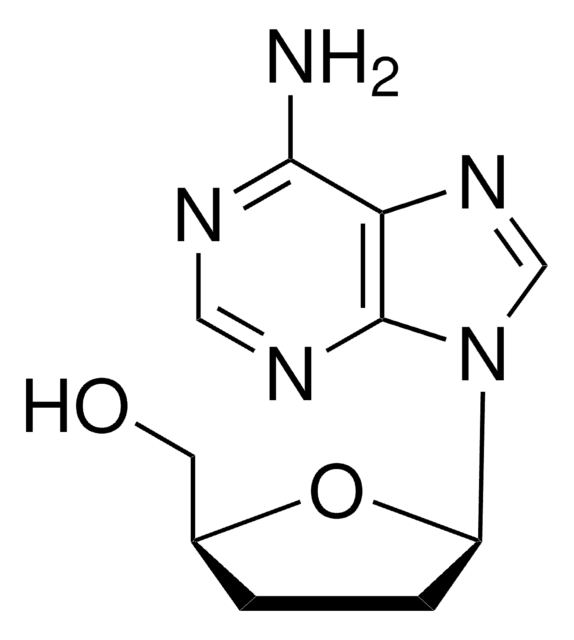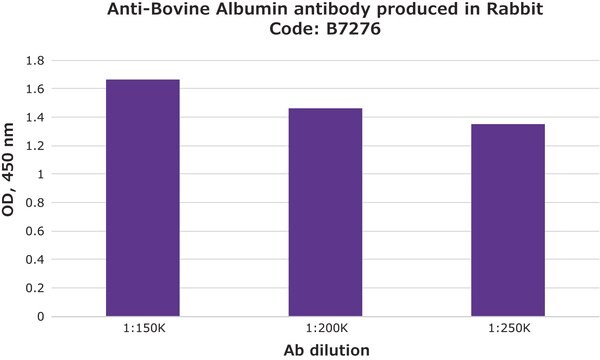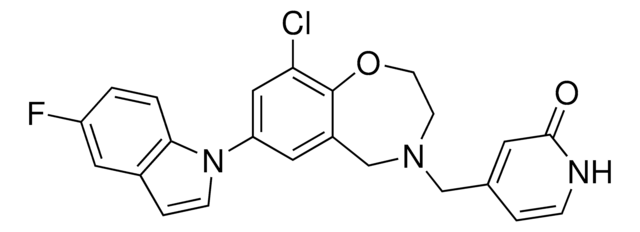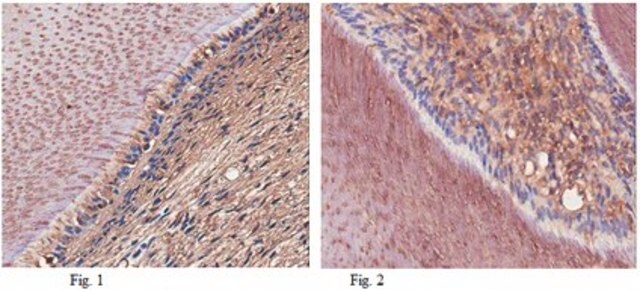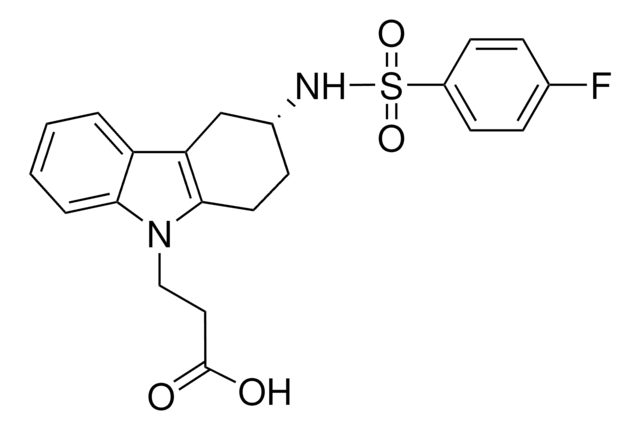SML2743
TM30089
≥98% (HPLC)
Sinónimos:
2-(3-(4-Fluoro-N-methylphenylsulfonamido)-3,4-dihydro-1H-carbazol-9(2H)-yl)acetic acid, 3-[[(4-Fluorophenyl)sulfonyl]methylamino]-1,2,3,4-tetrahydro-9H-carbazole-9-acetic acid, CAY 10471, CAY-10471, CAY10471, TM 30089, TM-30089, {3-[(4-Fluorobenzenesulfonyl)methylamino]-1,2,3,4-tetrahydrocarbazol-9-yl}acetic acid
About This Item
Productos recomendados
Quality Level
assay
≥98% (HPLC)
form
powder
color
white to beige
solubility
DMSO: 2 mg/mL, clear
storage temp.
−20°C
InChI
1S/C21H21FN2O4S/c1-23(29(27,28)16-9-6-14(22)7-10-16)15-8-11-20-18(12-15)17-4-2-3-5-19(17)24(20)13-21(25)26/h2-7,9-10,15H,8,11-13H2,1H3,(H,25,26)
InChI key
CANCTKXGRVNXFP-UHFFFAOYSA-N
Biochem/physiol Actions
signalword
Warning
hcodes
Hazard Classifications
Aquatic Acute 1 - Aquatic Chronic 1 - Eye Irrit. 2 - Skin Irrit. 2 - Skin Sens. 1
Storage Class
11 - Combustible Solids
wgk_germany
WGK 3
Certificados de análisis (COA)
Busque Certificados de análisis (COA) introduciendo el número de lote del producto. Los números de lote se encuentran en la etiqueta del producto después de las palabras «Lot» o «Batch»
¿Ya tiene este producto?
Encuentre la documentación para los productos que ha comprado recientemente en la Biblioteca de documentos.
Nuestro equipo de científicos tiene experiencia en todas las áreas de investigación: Ciencias de la vida, Ciencia de los materiales, Síntesis química, Cromatografía, Analítica y muchas otras.
Póngase en contacto con el Servicio técnico
